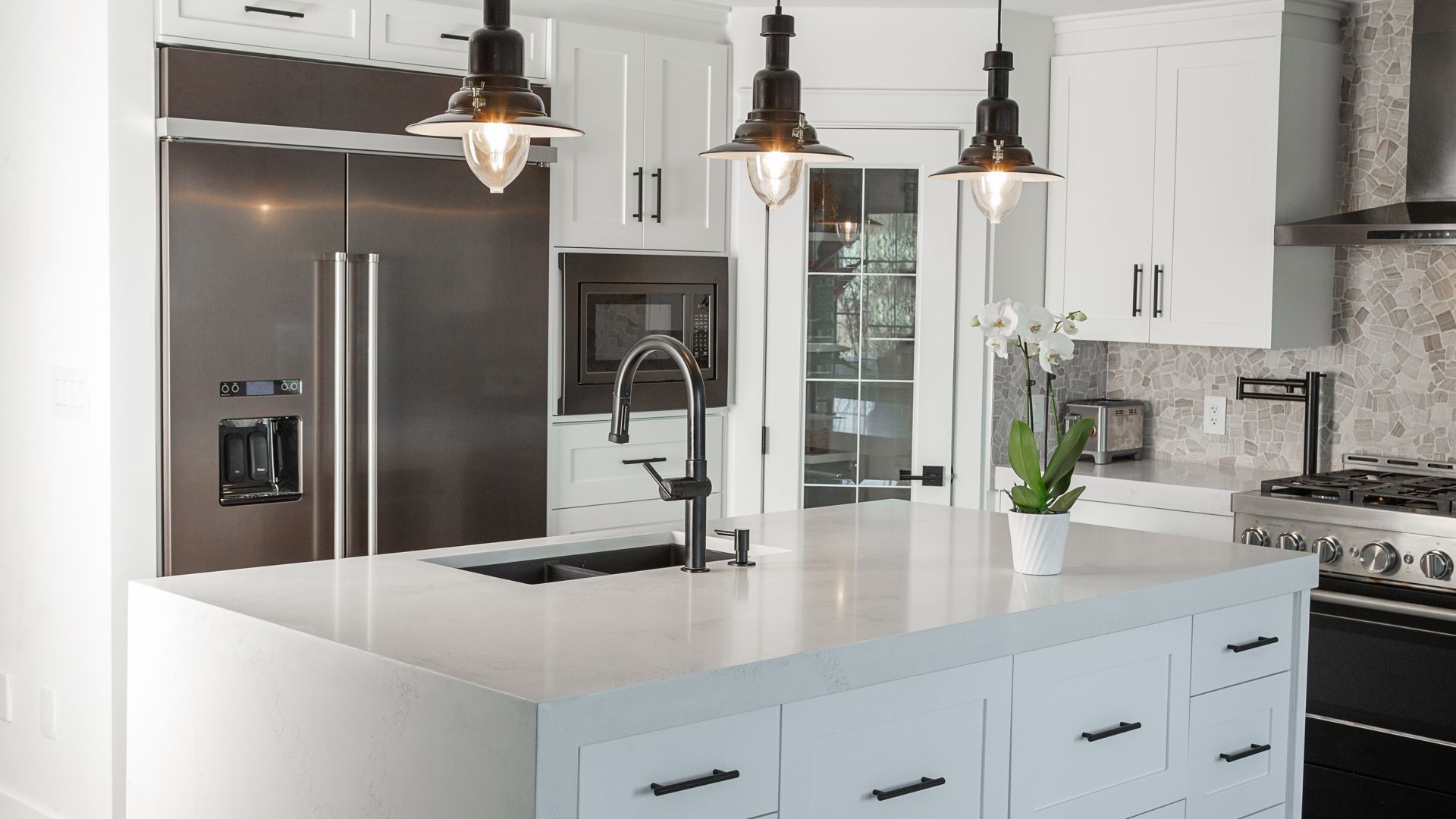If you have ever tasted the water that comes from the taps throughout your home, you have probably noticed one key characteristic: it probably doesn’t taste all that great. This isn’t at all abnormal—our water might be considered “clean” and safe for use in household purposes, but inclusions like minerals, chemicals, and other substances can affect the taste, clarity, smell, and even texture of our water. For those who want pure, healthy water to drink, you are probably resorting to buying water bottles or heavy and cumbersome five-gallon jugs.
However, pure water shouldn’t have to be an expensive, labor-intensive commodity. With a reverse osmosis system, you’ll have pure, drinking-quality water right in your own home for a mere fraction of the cost of the average flat of bottles. These systems are far more affordable than a whole-home purifier system, require little maintenance, and can generally be installed beneath any kitchen or utility room sink.
If you’re looking to install a reverse osmosis system, or you’re simply evaluating your options for at-home water purification, then you more than likely have a few questions. This blog will answer five of the questions we commonly receive from customers when it comes to reverse osmosis systems.
Do Reverse Osmosis Systems Use Energy?
Generally, no. Reverse osmosis systems are entirely mechanical and use nothing more than water pressure to operate normally. For most reverse osmosis systems, the only connections you need are a connection to your water system, and another one to your drain. Some systems include a splitter that allows you to tap into your standard cold-water line that feeds your kitchen sink.
Now, with that being said, some modern systems do have electronic features that require a bit of additional power. This might include things like membrane monitoring or water testing, both of which can dramatically improve your peace of mind and even improve the function of your filtration system. However, in order to utilize these features, you will have to plug the system in. If you have a plug under your sink for your garbage disposal, this may not be a problem. However, just be aware it will use a tiny amount of additional energy (to the tune of probably no more than a few extra cents per month on your electric bill).
How Much Do Reverse Osmosis Systems Cost?
Reverse Osmosis systems can vary quite a bit in price. The smallest and simplest systems are generally the most affordable and adding capacity and features makes the price go up from there. Likewise, your installation is probably the single greatest contributor to your final cost, and that can be influenced by everything from available space to what kind of water connection you have to the installation of any supplemental water lines (such as the installation of a filtered water line to your refrigerator for an in-door water tap or icemaker). A qualified plumber should be able to present you with your options and provide you with an accurate price for each of them.
How Much Water Do Reverse Osmosis Systems Produce?
Reverse osmosis systems do not produce pure water at nearly the rate a whole-home water filtration system will. Therefore, if you’re going with this option, do not anticipate that you’ll be able to shower, do laundry, or wash your hands with ultra-pure, drinking-quality water. In fact, most reverse osmosis systems can generally only produce a few gallons of clean water per hour at the most.
Your capacity will depend on what type of system you select, but the smallest systems tend to produce around a gallon of water per hour while larger systems may be able to produce upwards of four to five gallons per hour.
How Long Do Reverse Osmosis Systems Last?
Reverse osmosis systems are like any other part of your plumbing system, and that means they simply won’t last forever. However, as with many other components, the better your RO system is cared for, the longer it will last. So long as you replace the parts that wear out and stop working properly, your system could last decades. However, the relatively low cost of a new RO system makes full replacement not an overwhelming challenge to have to work around.
The average reverse osmosis filtration membrane will last around two to five years, depending on your water quality, how much you use it, and how much you take care of it. However, if you replace your membrane, storage tank, and other parts that wear out, your RO system could potentially last forever!
Do I Have to Change My Reverse Osmosis Filter?
Yes and no. Reverse osmosis systems rely on a filtration membrane that removes impurities from your water, and this membrane is the part that is the most likely to wear out. As stated above, the average membrane lasts around two to five years. Therefore, you will probably need to change your filter roughly every couple of years to half-decade.
However, only some reverse osmosis systems can actually be serviced in this way. Some systems seal the membrane in place in order to prevent leaks and encourage optimal functionality, and these systems will generally need to be replaced when the membrane can no longer properly filter water. The good news is you might only need to replace the filtration unit itself and not the storage tank, faucet, or water lines, but this is generally a more expensive repair.
Interested in installing a reverse osmosis filtration system in your home? Talk to the team at Smith’s Plumbing Services by dialing (901) 290-1110 and learn more from our pros today!